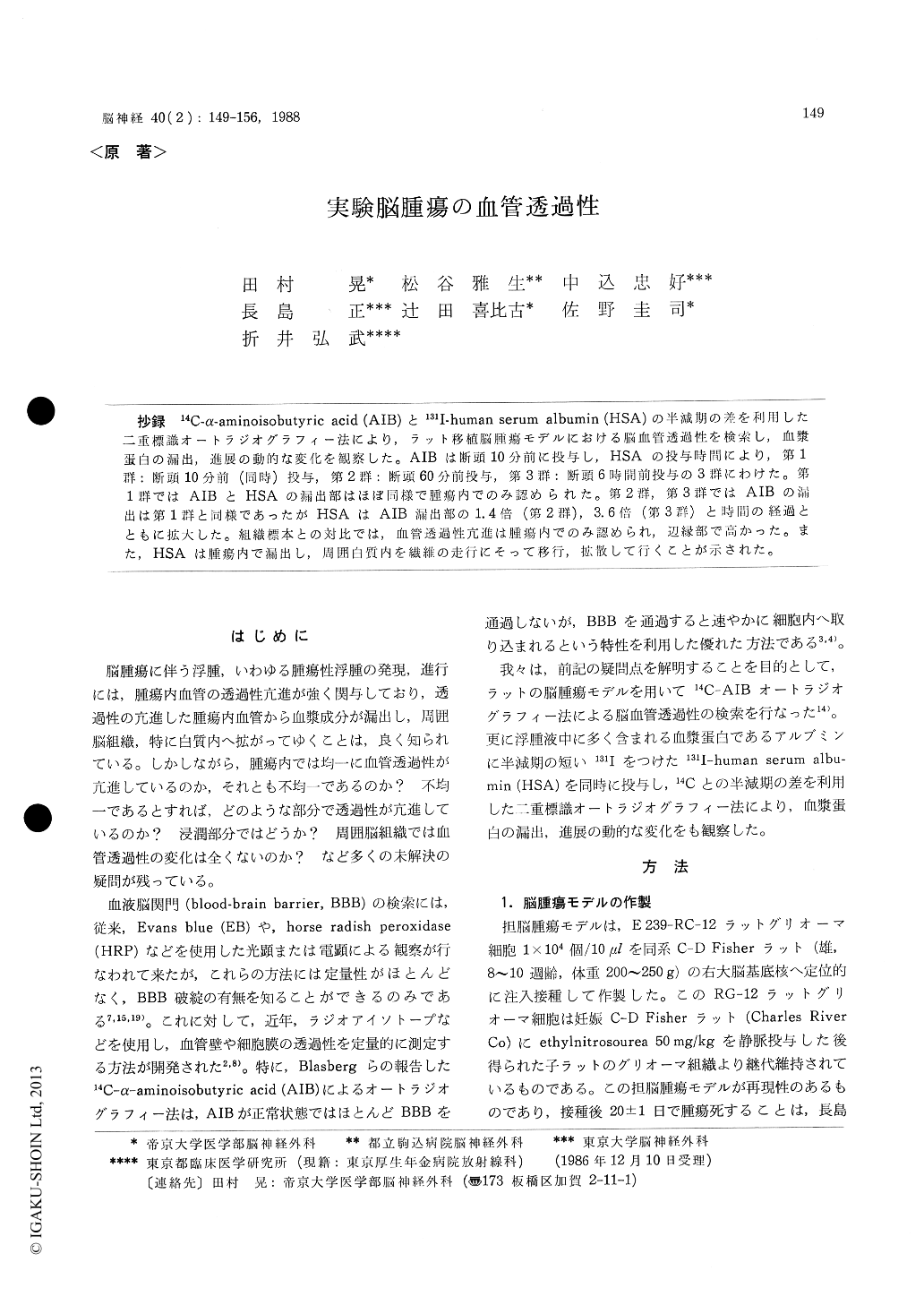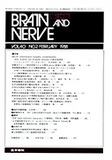Japanese
English
- 有料閲覧
- Abstract 文献概要
- 1ページ目 Look Inside
抄録 14C-α-aminoisobutyric acid (AIB)と131I-human serum albumin (HSA)の半減期の差を利用した二重標識オートラジオグラフィー法により,ラット移植脳腫瘍モデルにおける脳血管透過性を検索し,血漿蛋白の漏出,進展の動的な変化を観察した。AIBは断頭10分前に投与し,HSAの投与時間により,第1群:断頭10分前(同時)投与,第2群1断頭60分前投与,第3群:断頭6時間前投与の3群にわけた。第1群ではAIBとHSAの漏出部はほぼ同様で腫瘍内でのみ認められた。第2群,第3群ではAIBの漏出は第1群と同様であったがHSAはAIB漏出部の1.4倍(第2群),3.6倍(第3群)と時間の経過とともに拡大した。組織標本との対比では,血管透過性亢進は腫瘍内でのみ認められ,辺縁部で高かった。また,HSAは腫瘍内で漏出し,周囲白質内を繊維の走行にそって移行,拡散して行くことが示された。
It is still controversial whether edema fluid around a malignant brain tumor is derived from capillaries inside the tumor itself or not only from tumor vessels but also from peritumoral tissue. The purpose of this study is to clarify the region where the capillary permeability is increased using double autoradiographic method.
A suspension of 1×104 rat glioma cells (RG-12) was stereotactically implanted into the right basal ganglia of C-D Fisher rats. In this model, all animals are dead 20±1 days after the implantation. Two kinds of tracers, 14C-α-aminoisobutyric acid(AIB) and 131I-human serum albumin (HSA), were administered 14 to 17 days after the tumor im-plantation. In all rats, 14C-AIB was intravenously injected 10 min before decapitation. 131I-HSA was given 10 min before decapitation in five animals (group 1), one hour before in four animals (group 2), and six hours before in three animals (group 3). Autoradiograms for 131I-HSA were exposed for initial one to two days after the decapi-tation, while the exposure for 14C-AIB was de-layed until 4 months later. Autoradiograms of these two tracers were compared with the cor-responding sections with H-E stain for neuro-pathological examination. In group 1, the distri-bution of HSA as well as AIB was quite similar to tumor itself. In group 2 and group 3, the distributions of AIB were similar to the tumor. However, the distributions of HSA were 1.4 fold larger (group 2) and 3. 6 fold larger (group 3) than the tumor and expanded into the peritumoral region. These results show that both tracers extravasated from the capillaries in the tumor itself and HSA diffused into the peritumoral region especially into the white matter. It is suggested that tumor induced brain edema is derived from tumor itself.

Copyright © 1988, Igaku-Shoin Ltd. All rights reserved.


